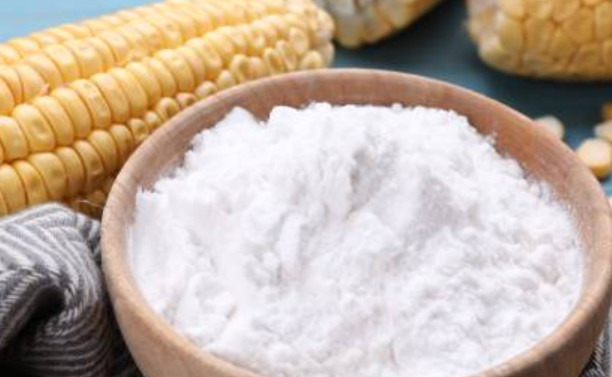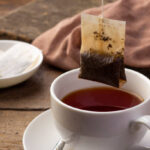How To Make Cornstarch? | Tips For Making Cornstarch
In an era where self-sufficiency in the kitchen has become more than just a trend, but a lifestyle for many, understanding the fundamentals of creating everyday staples from scratch is invaluable. “How To Make Cornstarch” is not just another DIY guide; it’s a deep dive into the art and science behind one of the most versatile ingredients found in pantries around the world. Crafted by culinary experts with years of experience in both traditional and modern cooking techniques, this article is designed to elevate your culinary skills to new heights. Whether you’re a seasoned chef or a curious beginner, the knowledge shared here promises to enrich your cooking experience by introducing you to the process of making cornstarch—a key component in thickening sauces, soups, and desserts. By exploring the origins, benefits, and various applications of homemade cornstarch, we aim to not only inform but also inspire our readers to embrace the rewarding practice of creating this essential ingredient from scratch. Join us as we unlock the secrets to making high-quality cornstarch in your own kitchen, ensuring you never run out of this culinary staple again. Get ready to embark on a journey that will change the way you view your pantry essentials, and let’s discover together how making your own cornstarch can be a simple, sustainable, and satisfying endeavor.
Contents
Cornstarch Explained

What is Cornstarch?
Cornstarch is a powdery starch derived from the endosperm of corn kernels. To make cornstarch, corn is first soaked and separated into its germ, fiber and protein components. The remaining starchy liquid is then dried and ground into the fine powder we know as cornstarch. Compared to other starches, cornstarch is unique in that it is 100% starch, while things like flour contain protein and fat as well.
Cornstarch particles are quite small, allowing them to mix smoothly into liquids. When cooked, the starch granules swell with water and thicken the surrounding mixture. This makes cornstarch an ideal thickening agent for recipes like gravies, puddings and sauces.
Types and Uses
There are a few different types of cornstarch to know:
- Common cornstarch – The most widely used type, made from corn. Provides thickening power and a neutral flavor.
- Wheat starch – For those avoiding corn, wheat starch offers similar properties.
- Tapioca starch – Extracted from cassava root, tapioca starch is another corn-free alternative. It can thicken at higher temperatures than cornstarch.
- Potato starch – Made from potatoes, this starch works well for frying as it resists breaking down.
The pure starch nature of cornstarch makes it useful for:
- Thickening soups, sauces and gravies
- Binding ingredients in desserts like pudding
- Creating crispy coatings for fried foods
- Adding body to savory pie fillings and casseroles
- Preventing sticking in baking by dusting pans
Nutritional and Health Aspects
Nutritional Profile
Cornstarch is a high-carb, low-calorie food. A 1-tablespoon serving provides:
- 25 calories
- 6 grams carbohydrate
- 0 grams fat, protein or fiber
Since cornstarch is pure starch, it lacks nutritional value beyond carbohydrates. But it can provide a source of energy when cooked and is naturally gluten-free. Those following low-carb or keto diets should use sparingly.
Health Considerations
Cornstarch has a high glycemic index, meaning it causes a rapid spike in blood sugar when consumed. This makes cornstarch unsuitable for some diabetics. But in small amounts as a thickener, it likely poses little concern for most healthy individuals.
As a bland, tolerated food, cornstarch is sometimes used to treat diarrhea in children. It can also soothe skin irritations when made into a poultice along with water. Always consult a doctor before using cornstarch as a home remedy.
For those with corn allergies, wheat or tapioca starch can provide gluten and corn-free alternatives. Potato starch is also naturally gluten-free.
Cornstarch in Culinary Arts
Science of Thickening
When cornstarch is heated in water, its starch molecules absorb and trap water. This causes them to swell up and interact with one another, leading to thickening. A few tips:
- Only thickens after reaching 185°F
- Works best in acidic liquids like fruit sauces
- Overheating can thin the mixture as starch molecules break down
- Can thin out again upon cooling after thickening
By understanding these unique properties, cooks can use cornstarch to fine-tune flavors and textures in recipes.
Advanced Cooking Techniques
Beyond basic thickening, cornstarch can help achieve advanced cooking and baking results:
Velveting – Dusting meat with cornstarch seals in moisture when stir-frying.
Panade – Mixing cornstarch into ground meat keeps burgers juicy.
Gluten-free baking – Cornstarch replaces gluten to help bind and add structure.
Frying – Cornstarch coats foods, sealing in moisture while creating a crispy crust.
Foams – Whisking cornstarch into hot liquids produces light, airy foams.
Clear pie fillings – Balancing cornstarch and sugar prevents opaque fillings.
Crisp toppings – Sprinkling cornstarch on casseroles or crumbles makes them crispy.
With practice, home cooks can master these techniques for restaurant-worthy dishes.
Cultural and Traditional Uses
Cornstarch features prominently in many cultural cuisines:
- Chinese cooking – Velveting meats, stir-fries, soups
- Southern US – Thickening gravies, frying chicken
- Brazilian cuisine – Creamy puddings, fofos
- Indian sweets – Binders in halwa, kheer, and ladoo
- Passover meals – Replaces flour during Jewish holiday
- Gluten-free diets – Thickens and binds in place of wheat
Understanding its role in global food culture demonstrates the worldwide appeal of cornstarch.
DIY Cornstarch
Homemade Cornstarch
With just a few ingredients, cornstarch can be easily made at home:
Ingredients
- 2 cups water
- 2 cups dried corn (or alternative grain)
- Cheesecloth
- Blender
Instructions
- Simmer corn in water for 30 minutes until soft
- Drain, reserving liquid, and blend corn and liquid until smooth.
- Pass mixture through cheesecloth to strain out solids.
- Let liquid sit overnight so starch settles on bottom.
- Pour off water and spread out starch to dry completely.
The resulting powder is cornstarch. Grind in a blender if lumps remain.
Economic and Environmental Considerations
Homemade cornstarch takes more time and energy than buying it pre-made. But DIY cornstarch can be a frugal choice for larger households that use a lot of cornstarch. It also eliminates packaging waste.
Consider cost, convenience and yourIntended use when deciding between homemade and store-bought cornstarch. Making small batches occasionally can allow you to use corn harvested from your garden.
Storing and Preserving Cornstarch
Storage Tips
To extend shelf life, store cornstarch:
- In a cool, dry place or pantry
- Away from heat, light and moisture
- In an airtight container if humidity is high
- For 6-12 months before opening; 1 year once opened
If clumps form, sift before using. Discard if cornstarch smells unpleasant or shows grayish discoloration.
Freezing Cornstarch
Pure cornstarch can be successfully frozen for longer storage:
- Place cornstarch in airtight freezer bags or containers. Remove excess air.
- Freeze for up to 1-2 years at 0°F.
- Thaw completely before using in recipes.
- Freezing can extend shelf life but may impact thickening ability.
Freezing allows larger batches or homemade cornstarch to stay fresh longer.
Beyond the Kitchen
Non-Culinary Uses
- Personal care – Natural dry shampoo, powdered face wash, deodorant
- DIY crafts – Glue alternative, play dough, papier-mâché
- Cleaning – Polishing metal, cleaning windows, removing grease
- Science – Non-Newtonian fluids, bouncy putty, faux snow
From self-care to household help, cornstarch finds many ingenious uses beyond cooking.
Environmental Impact
While biodegradable, cornstarch production requires significant water and energy resources. Buying organic or sustainably-grown cornstarch helps reduce the environmental footprint. Additionally, reusing leftover cornstarch-water mixtures in gardening or composting prevents waste. With mindful usage and disposal, cornstarch can be an eco-friendly kitchen staple.
Substitutes and Comparisons

Finding the Right Substitute
When swapping cornstarch for another starch, consider:
- Purpose – Thickening, frying, baking?
- Flavor – Will the sub change the flavor?
- Temperature – Can the sub withstand heating?
Some common substitutes:
- Arrowroot – 1:1 for clear sauces, fruit fillings
- All-purpose flour – 1 T flour per 1 t cornstarch
- Tapioca – 2:1 for pie fillings, use in cooler temps
- Wheat starch – 1:1 for neutral flavor
- Potato starch – For frying with higher heat
Experiment to find the best match for each application. Reduce liquids slightly to account for differences in thickening power.
Cornstarch vs. Cornflour
Cornstarch refers to pure starch powder from corn.
Cornflour is ground dried cornmeal, containing the grain’s starch, fiber and protein.
Cornflour has more flavor and nutrition than cornstarch. However, cornstarch results in much smoother thickening. Substitute a scant 1:1 ratio if using cornflour to thicken dishes.
Conclusion
As this guide demonstrates, humble cornstarch is far more than just a thickening agent. It is an emulsifying, gelling, moisture-sealing staple utilized in cuisines worldwide. Understanding its unique properties allows cooks to use cornstarch to achieve specific textures and transform recipes. But it also finds many uses beyond the kitchen in crafts, DIY projects, science experiments and natural personal care. While making your own cornstarch is possible, convenience and consistency make store-bought varieties a kitchen essential. With proper storage and substitution, cornstarch can make cooking and baking more efficient and effective. Cornstarch certainly earns its place as a versatile, multifunctional ingredient.
https://bamboowokmanvel.com/food-drink/cooking-recipes/
Harmony Saunders is the CEO and founder of Bamboo Wok, a family-owned and operated Chinese restaurant that has been serving the Manvel, Rosharon, and Alvin communities for more than nine years. Our delicious dishes are made from scratch with the best ingredients, vegetables are fresh cut daily in our kitchen, and poultry is delivered every two days.
So whether you’re craving Chinese food for the family or need catering for your next event, please give us a try! We know you won’t be disappointed with our fresh, authentic Asian fare.



















